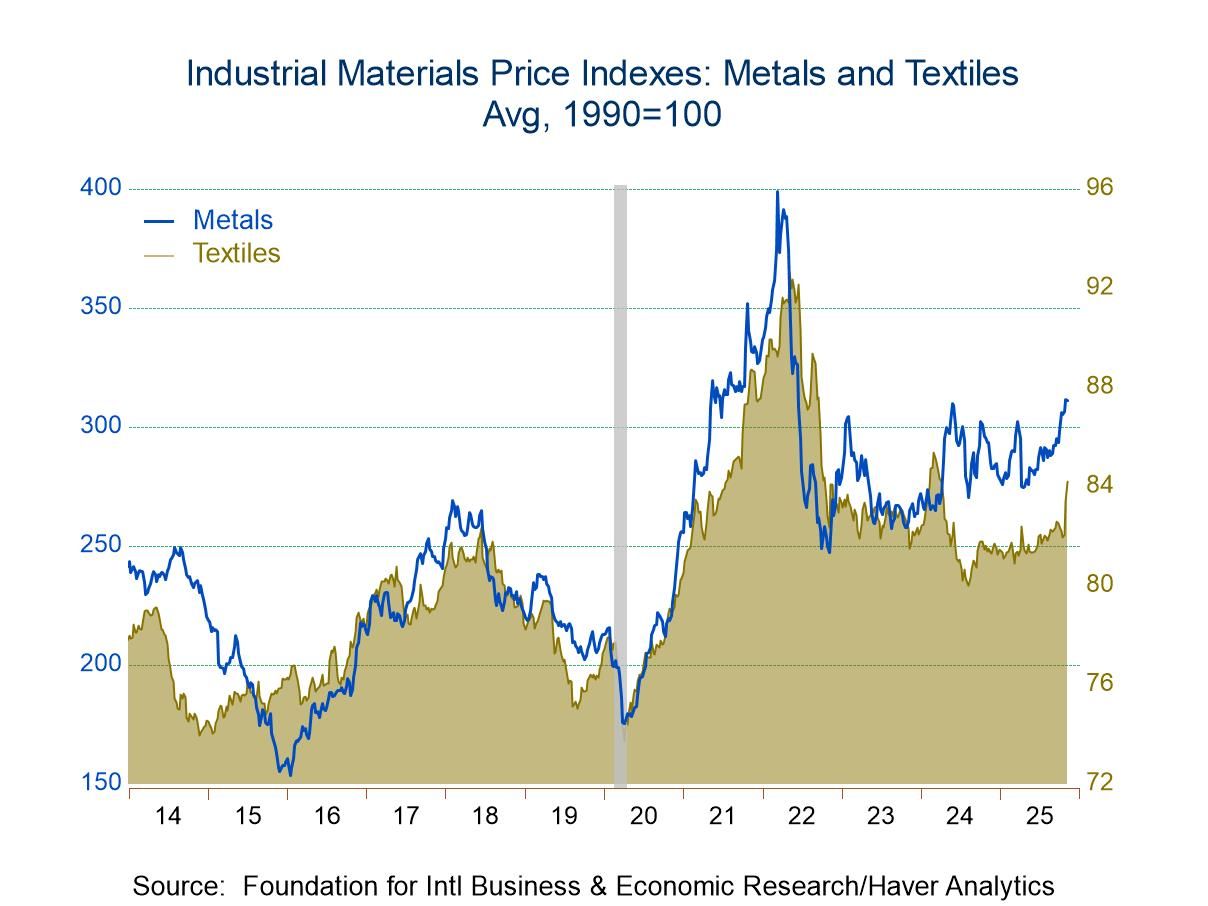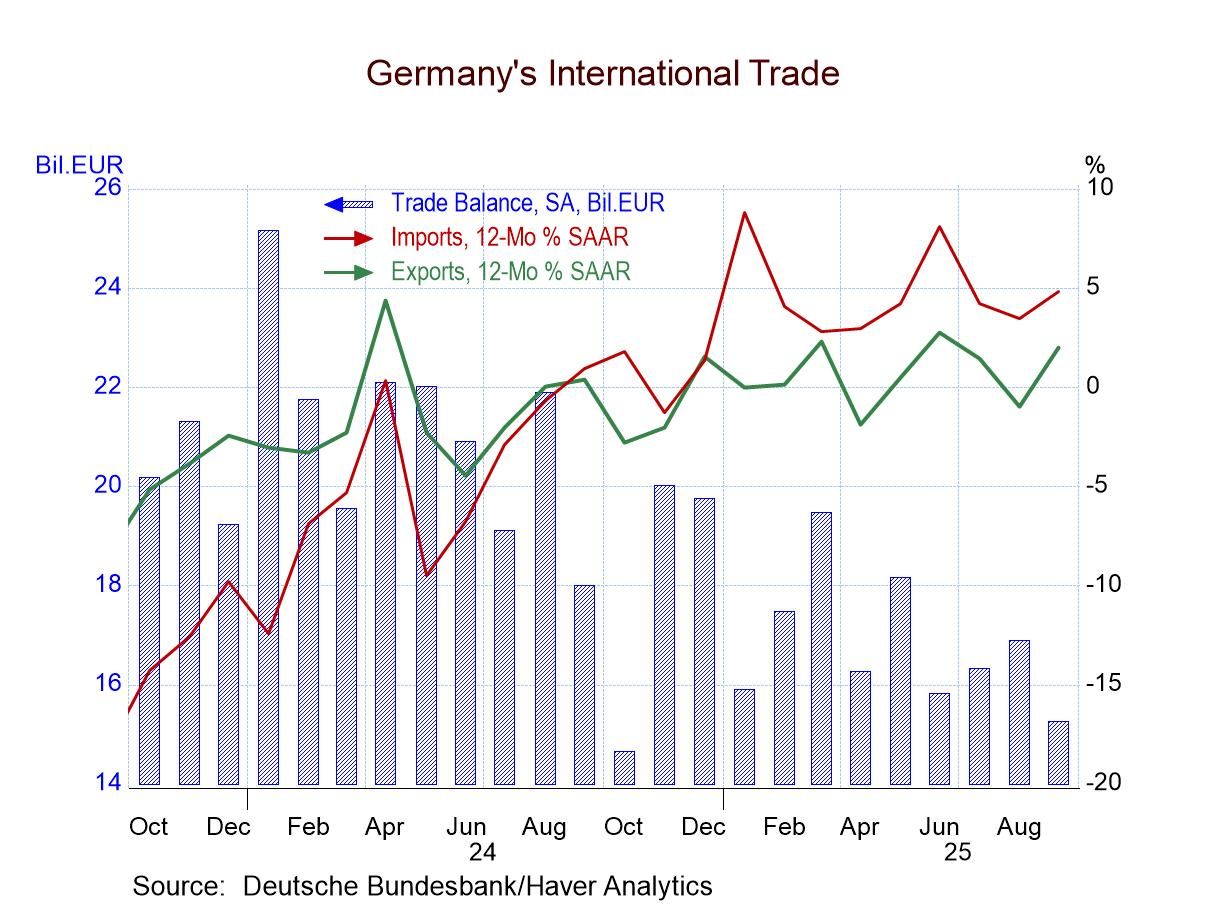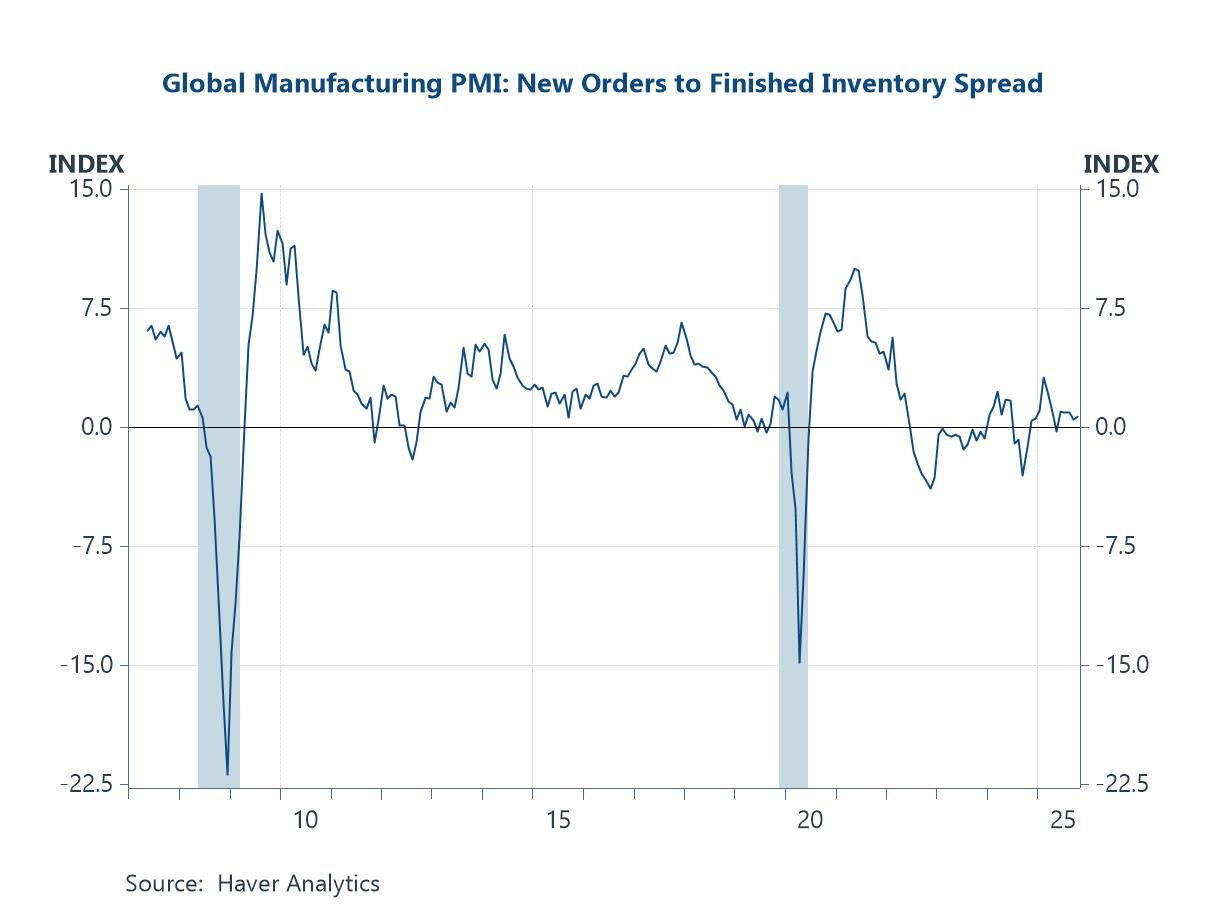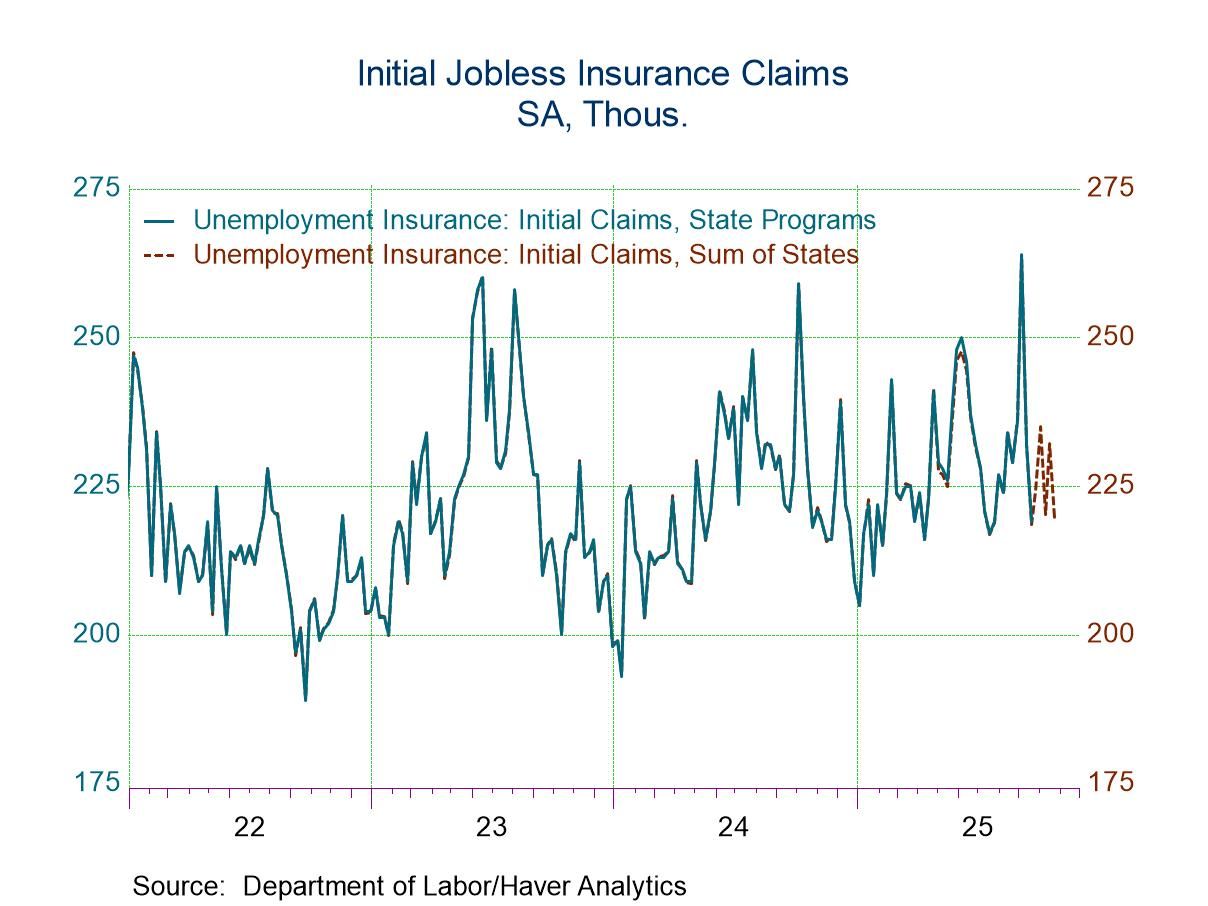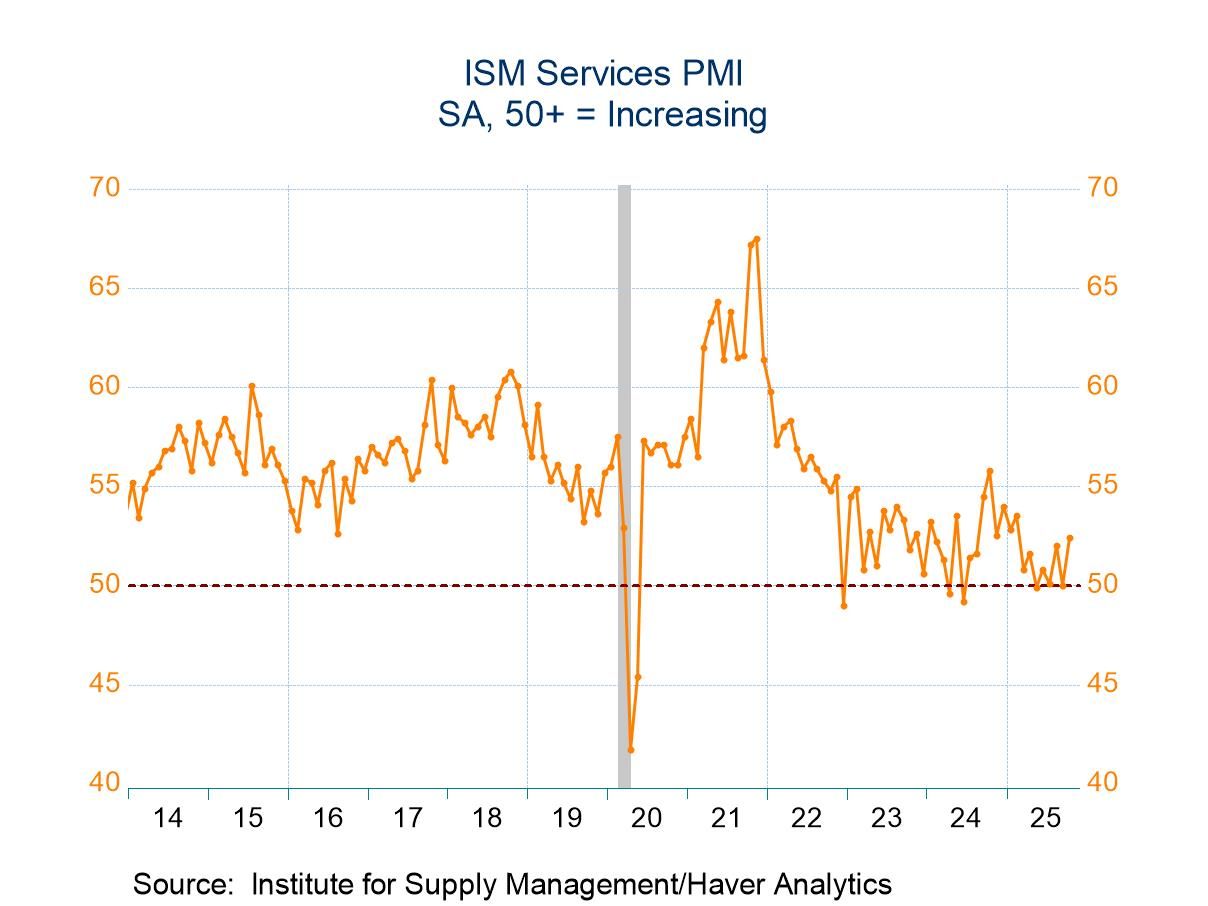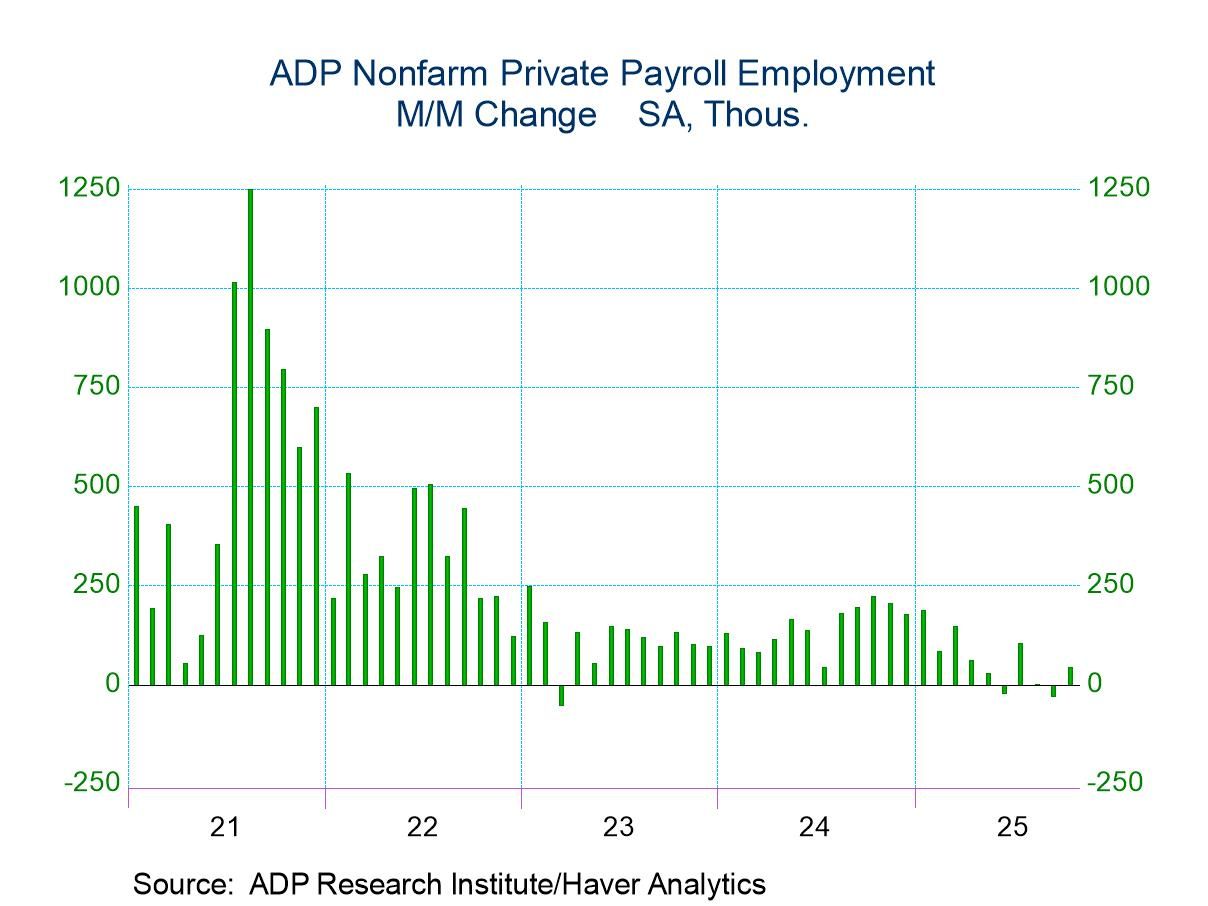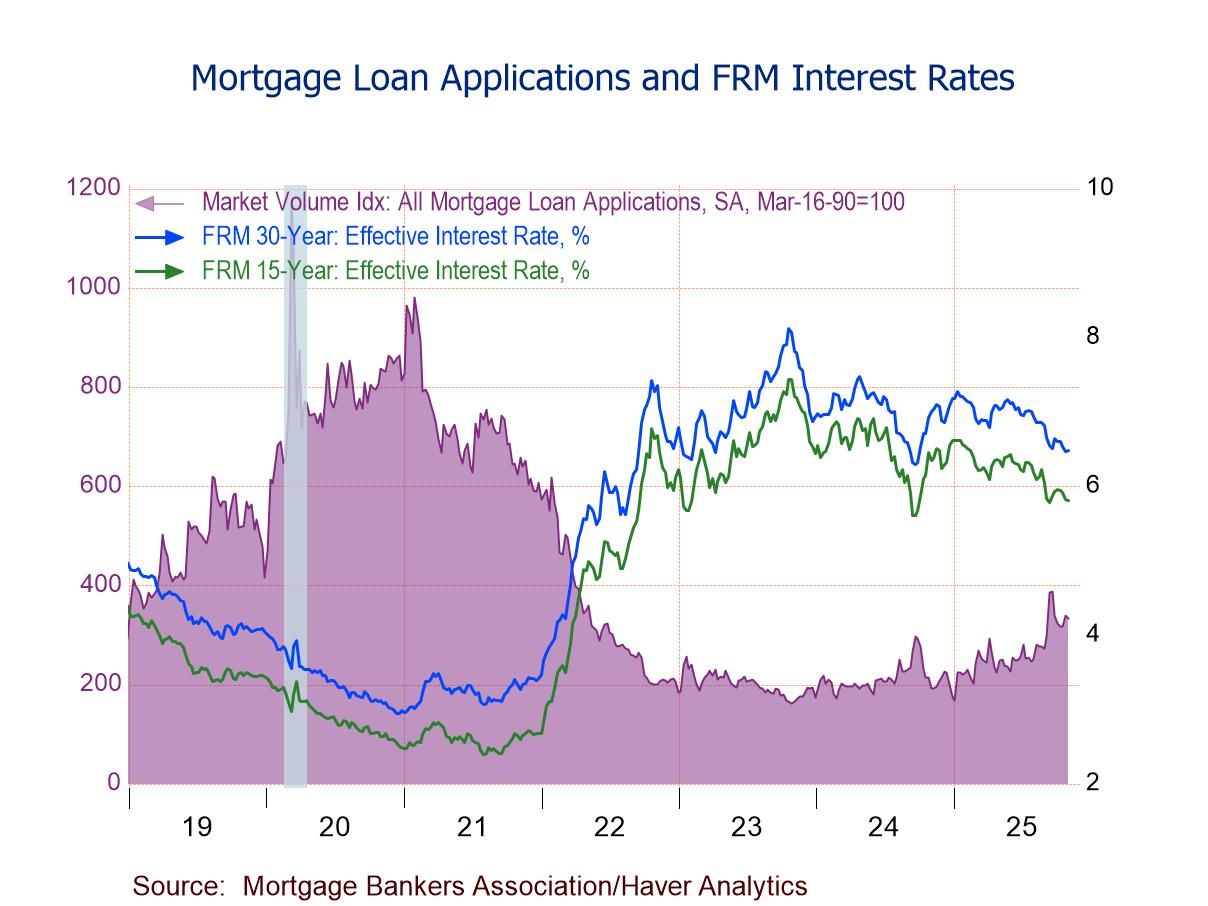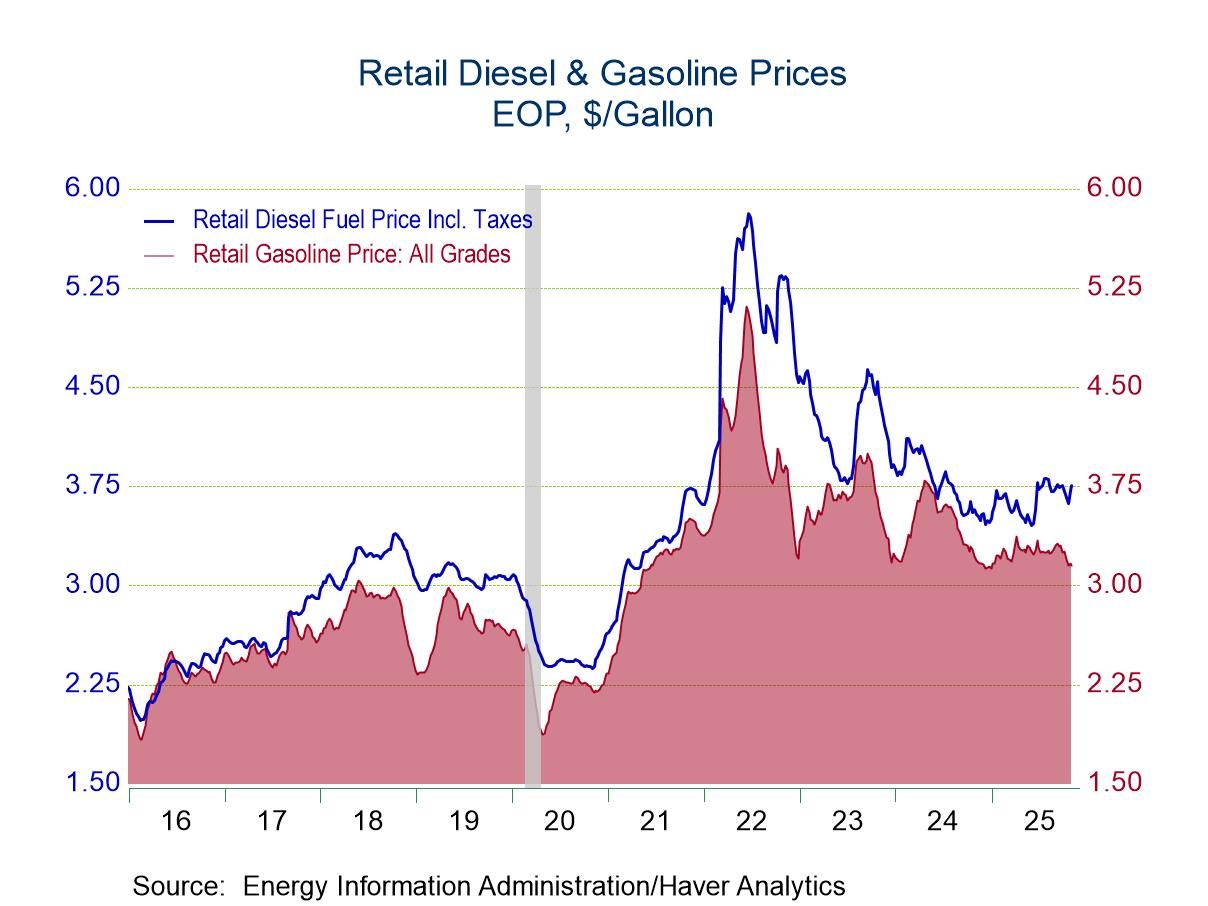- Textile and metals prices strengthen.
- Framing lumber costs plummet.
- Crude oil prices weaken.
by:Tom Moeller
|in:Economy in Brief
- Germany| Nov 07 2025
German Trade Surplus Shrinks Despite Strong Exports
The chart provides a good overview for German trade trend. The table breaks trade trends down by categories and provides growth rates on shorter horizons of 3 months, 6 months and 12 months. But the chart depicts the overarching trends well. It shows the German surplus being diminished on a gradual path and not altogether in a clear monotonic fashion. Export and import lines on the chart move mostly sideways (horizontal). The export line is below the import line since late last year. These two series plots on the right-hand scale and they depict growth rates (year-over-year). So sideways movements mean roughly steady growth. Exports have been growth steadily year-over-year at a weak pace that on occasion has been a decline in terms of their year-on-year value. Generally, the green line is in positive territory. The red import line has been stronger, indicating somewhat better, steadier import growth over the period.
While exports had a good September, export growth sequenced from 12-months to 6-months, to 3-months has been weakening. Imports also put in a strong September but are showing some erosion from 12-month to 6-months to 3-months in terms of annualized rates of growth. Still, import growth rates remain quite strong and consistent; the sense of erosion is clear but also moderate – it’s a moderate erosion in progress for imports.
Capital goods exports from Germany are improving- this observation is based on lagged data with a one-month lag built in. But consumer goods and vehicle exports are slowing and rather sharply- likely as a result of U.S. tariffs.
Import side trends, with the same lag, are not as clear cut. Capital goods imports are growing, and motor vehicle imports are improving and accelerating. Consumer goods imports have erratically slowed.
Real exports and imports on sequential lagged data show exports contracting on most horizons while imports generate consistent positive growth in real terms. There is a big difference in these two trends expressed in real terms.
On balance, German trade trends are shifting. The trade balance is gradually eroding. Change is in play.
 Global| Nov 06 2025
Global| Nov 06 2025Charts of the Week: Uneven But Unbroken
Recent financial market developments have been shaped by a renewed bout of volatility, with heightened concerns about stretched AI valuations triggering a big correction across parts of the tech sector. This comes against a backdrop of lingering uncertainty in Washington, where the US government shutdown has continued to delay the release of several key economic reports, clouding visibility on near-term momentum. Still, the broader macro signals offer a mixed but nuanced picture. Global manufacturing PMIs have continued to hold up, hinting that underlying industrial momentum remains resilient (chart 1). The latest US Senior Loan Officer Survey points to a stabilisation in credit conditions—banks remain cautious, but the most intense phase of tightening may have now passed (chart 2). In China, the October PMIs reflected renewed softness in manufacturing alongside a still-steady services sector, tentatively suggesting that growth may be rebalancing, albeit at a weaker aggregate pace of growth (chart 3). Australia’s inflation and labour market data, meanwhile, have complicated the case for near-term policy easing, with the RBA opting to stay on hold this week as core inflation remain sticky. In Argentina, currency weakness persists even as equity markets rally, highlighting the policy and market tension surrounding President Milei’s reform agenda (chart 5). And finally, at a more structural level, latest global emissions data serve as a reminder that energy, manufacturing, transport, and households remain the principal sources of CO₂—illustrating how the climate and energy transition will continue to shape the macro landscape well beyond the current economic cycle (chart 6).
by:Andrew Cates
|in:Economy in Brief
- Decline in initial claims reverses earlier gain.
- Continuing claims move higher.
- State unemployment rates vary.
by:Tom Moeller
|in:Economy in Brief
- USA| Nov 05 2025
U.S. ISM Services PMI Rebounds in October; Price Index Advances
- Total services index is highest since February.
- Business activity, new orders and employment increase.
- Prices index continues upward trend from 2024 low.
by:Tom Moeller
|in:Economy in Brief
- USA| Nov 05 2025
U.S. ADP Employment Recovers in October
- Gain in private payrolls is first in three months.
- Service-sector & construction hirings move up, but factory jobs decline.
- Wage growth steadies.
by:Tom Moeller
|in:Economy in Brief
- Purchase applications -0.6% w/w; refinancing loan applications -2.8% w/w.
- Effective interest rate on 30-year fixed loans ticks up to 6.48% despite ongoing downward trend.
- Average loan size rebounds to the highest level since the September 19 week.
- USA| Nov 04 2025
U.S. Energy Prices Are Mixed in Latest Week
- Gasoline prices are minimally changed.
- Crude oil costs rise further.
- Natural gas prices strengthen.
by:Tom Moeller
|in:Economy in Brief
- of2684Go to 12 page


